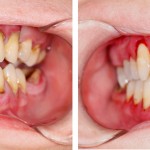
Periodontal disease is a common problem and chronic periodontal disease is a progressive chronic inflammatory process which can damage periodontal tissues leading to loss of teeth. Treatment and management is based on improving oral hygiene together with routine scaling and root planning (SRP). A wide range of adjunctive agents have been used to try and improve the effectiveness of SRP. Chlorhexidine (CHX) shows strong antibacterial activity in the periodontal pocket and is commonly used as adjunct to SRP.
The aim of this review was to evaluate the efficacy of adjunctive subgingival administration of chlorhexidine gel in nonsurgical periodontal treatment (NSPT) for chronic periodontitis (CP) compared to NSPT alone.
Methods
Searches were conducted in the PubMed, Embase, the Cochrane Collaboration library and OpenGray databases. This was supplemented by hand searching the journals; Journal of Dental Research, Journal of Periodontology, Journal of Clinical Periodontology and Journal of Periodontal Research.
Two reviewers independently selected studies. Randomised control trials (RCTs) comparing scaling and root planning (SRP) alone/placebo against SRP and adjunctive CHX gel or full-mouth SRP alone/placebo and full mouth disinfection with subgingival use of CHX gel published in English were considered. Study quality was assessed using the Cochrane risk bias tool and data extracted using a standardised form. The primary outcomes were pocket probing depth and clinical attachment level at three and six months.
Results
- 17 RCTs were included. Sample sizes range from 5 to 98 patients
- Six studies were considered to have a low risk of bias to an unclear risk and nine a high-risk bias.
- 10 studies used subgingival delivered xanthan-based CHX gel (XAN-CHX gel) with 9 studies using 1.5% and one 2.5% XAN-CHX gel.
- 3 studies reported the use of gels containing 0.5, 1 and 2% CHX without xanthan gum.
- The timing and frequency of CHX Gel application varied between the trials.
- For adjunctive application of CHX gel to SRP compared to SRP alone at selected sites, the meta-analysis (4 studies) showed a significant improvement in PPD reduction, with a mean difference (MD) = 0.15 mm (95% CI; 0.04– 0.25mm). No significant differences were found on the CAL gain between the groups, MD= 0.03 (95% CI; − 0.09 to 0.15).
- A subgroup analysis for adjunctive XAN-CHX gel (3 studies) showed a significant PPD reduction, MD=0.15mm (95% CI: 0.04–0.25mm) with no benefit for CAL gain MD= 0.05(95% CI; −0.05 to 0.15).
- Adverse events, such as changes in taste perception, dry mouth, erythema, oral ulceration, gingival tingling, periodontal abscesses, root sensitivity and staining of tongue or teeth, were reported
Conclusions
The authors concluded: –
adjunctive subgingival administration of XAN-CHX gel at individual selected sites with PPD at least 4mm promotes a slight additional benefit in PPD reduction. Adjunctive antiseptics of CHX gel at specific sites might be advisable, but SRP always plays the dominate role in the treatment of chronic periodontitis. Due to a lack of high-quality studies, more RCTs with larger sample sizes and strict standards are needed to confirm these conclusions.
Comments
This review has searched a good range of databases and supplemented this with hand-searching of a number of relevant journals. However, the decision to use only English language studies means that some relevant studies may have been excluded. While study quality was assessed one could argue that they have been overgenerous with the low risk of bias rating as table 2 in the original paper shows that 5 of those rated as at low bias were unclear in relation to blinding of personnel, patients or outcome assessment.
A 2017 review by John et al (Dental Elf – 9th Aug 2017) took a broader view of adjuncts to SRP suggesting that they improve CAL. This current review of CHX gel did find an improvement in PPD but not CAL with CHX use. While the difference in the CHX group was found to be statistically significant one has to consider whether the improvement is clinically important. As an example, the 2015 ADA guideline on the non-surgical treatment chronic periodontitis (Dental Elf – 21st Jul 2015) chose to use CAL as the main outcome measure and defined a clinical relevance scale was agreed a priori for CAL ; 0-0.2mm= zero benefit; >0.2-0.4= small benefit; >0.4-0.6 moderate benefit; >0.6mm substantial benefit.
Links
Primary Paper
Zhao H, Hu J, Zhao L. Adjunctive subgingival application of Chlorhexidine gel in nonsurgical periodontal treatment for chronic periodontitis: a systematic review and meta-analysis. BMC Oral Health. 2020;20(1):34. Published 2020 Jan 31. doi:10.1186/s12903-020-1021-0
Other references
Dental Elf – 9th Aug 2017
Dental Elf – 21st Jul 2015
